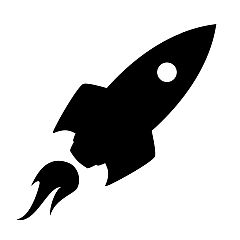In the aerospace context, an actuator is a device that converts energy into motion in order to perform a specific task. Actuators are used to control and move various parts of aircraft and spacecraft, such as flaps, rudders, and landing gear. They are typically powered by hydraulic, pneumatic, or electrical systems, and may be controlled by electronic or mechanical means.
There are many different types of actuators used in the aerospace industry, including linear actuators, rotary actuators, and telescoping actuators. Linear actuators are used to move parts in a straight line, while rotary actuators are used to rotate parts around an axis. Telescoping actuators are used to extend and retract parts, such as landing gear.
Actuators are critical components of aircraft and spacecraft, as they allow the vehicle to control its movement and position in space. They are typically designed to be durable and reliable, as they must be able to perform their functions accurately and consistently even under extreme conditions.
Here are a few examples of how actuators are used in the aerospace industry:
-
Flap and rudder control: Actuators are used to control the flaps and rudders of an aircraft, which are used to adjust the lift and drag of the wings and the yaw and pitch of the aircraft. For example, hydraulic actuators may be used to extend and retract the flaps, while electric actuators may be used to move the rudder.
-
Landing gear control: Actuators are used to extend and retract the landing gear of an aircraft. Telescoping hydraulic actuators are commonly used for this purpose, as they can provide the necessary force and precision to move the heavy landing gear.
-
Missile guidance: Actuators are also used in the guidance systems of missiles to control the movement of the fins or wings, which are used to steer the missile towards its target. Electric actuators are often used for this purpose, as they can be quickly and accurately controlled by electronic guidance systems.
-
Satellite deployment: Actuators are used to deploy the various systems and instruments on a satellite, such as antennae, solar panels, and scientific instruments. Telescoping actuators are often used for this purpose, as they can extend and retract the various parts of the satellite with precise control.
Overall, actuators play a vital role in the aerospace industry, as they allow aircraft and spacecraft to control their movement and position, and perform various tasks.
Related Articles to the term 'Actuator' | |
| 'Motion' at top500.de | ■■■■■■ |
| Motion may refer to any movement or change in position or time . . . . . . Read More | |
| 'Actuation' | ■■■■■■ |
| Actuation refers to the process of activating or controlling a device or system by means of an external . . . Read More | |
| 'EEE' | ■■■■■■ |
| In the aerospace context, \'EEE\' usually stands for \'Electromechanical, Electrical, and Electronic.\' . . . Read More | |
| 'Electric Actuator' at top500.de | ■■■■■■ |
| Electric Actuator: Electric actuator in the industrial context refers to a Device that converts electrical . . . Read More | |
| 'Hydraulic Actuator' at top500.de | ■■■■■■ |
| Hydraulic Actuator: A hydraulic actuator is a mechanical device that converts hydraulic energy into mechanical . . . Read More | |
| 'Cylinder' at top500.de | ■■■■■ |
| A Cylinder is defined as: 1.) the drum-like part of a rotary printing press, also called a mandrel, to . . . Read More | |
| 'Galvanometer' at top500.de | ■■■■■ |
| Galvanometer: A galvanometer is a type of sensitive ammeter: an instrument for detecting electric current. . . . Read More | |
| 'Nitrogen' | ■■■■■ |
| Nitrogen is a chemical element with the symbol N and atomic number 7. In the aerospace context, nitrogen . . . Read More | |
| 'Actuator' at top500.de | ■■■■■ |
| Actuator: An actuator in the industrial context is a device that converts control signals into mechanical . . . Read More | |
| 'Multi-axes' | ■■■■■ |
| Multi-axes: In the aerospace context, the term \'multi-axes\' refers to systems or equipment that have . . . Read More | |
